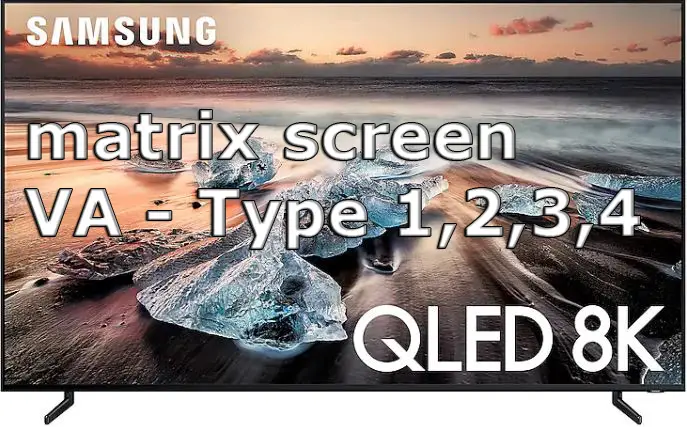A lot of articles have been written about how the matrixes of TN, VA, IPS, OLED screens differ. We will not go into details of the descriptions of the differences between screen matrices of different types.
In our article we will look at the difference between the matrix made on the same technology in different models of TVs or monitors.
Example: LG TVs are equipped with IPS matrices, but they are divided into ordinary and super matrices. Similarly, Samsung TVs use matrices made using VA technology, but there is a division into ordinary and matrices made using quantum dot technology. But there are several types of matrix types manufactured using the same technology, and not just two of the above example.
If you pay attention to the matrix of screens, they differ quite significantly, these differences are related both to the manufacturing technology and what materials are used for the manufacture of screens. Types of matrices manufactured by the same technology can be further divided into several types, although manufacturers do not report this. The reason for this is quite simple, why complicate the choice of the buyer.
The division of the matrices of the same type into categories
- Matrix screen type 1 – the cheapest matrix, usually installed in the TV 4 or 5 series or entry-level monitors. The difference is that the cost of manufacturing such matrices is very cheap, cheap materials are used and, as a consequence, the parameters of such matrices are very modest. Such matrices usually have the following basic parameters.
- 60Hz screen refresh rate,
- 6bit or 8bit color depth
- the screen transmits about 65-75% of the RGB standard color palette Manufacturers in televisions and monitors with such matrices may not indicate the percentage of coverage of the color space.
- matrices do not support local dimming
- Matrix screen type 2 – improved matrix, a more complex control system, in the production of better materials are used. Matrix type 2 is installed in TVs 6 and 7 series or monitors the average price segment. Such screen matrices have the following technical parameters.
- 60Hz or 120Hz refresh rate
- 8bit or 10bit color depth but with scanning backlight (8bit + FRC)
- color coverage of about 80% RGB
- There is support for local dimming, but not large areas, as a rule, the backlight is divided from 6 to 24 zones.
- Due to the use of better materials, higher brightness and contrast.
- Type 3 matrices are similar to those of the second type, but some parameters have been improved. Such matrices are installed on TV 7 series.
- 120Hz screen refresh rate.
- color depth 10 bit. (8Bits + FRC)
- support for local dimming, controlled screen dimming up to 128 or more.
- 4. Matrix 4 types – matrices made using new materials that provide a bright and contrasting image. LG has a super matrix, Samsung in quantum dots. Such arrays are installed on top devices, in TVs it is 8 and 9 series. The parameters of these matrices are as follows.
- 10bits color depth. no flickering
- screen refresh rate of 120 frames per second.
- Support for local dimming is an array with support for more than 200 dimming zones.






